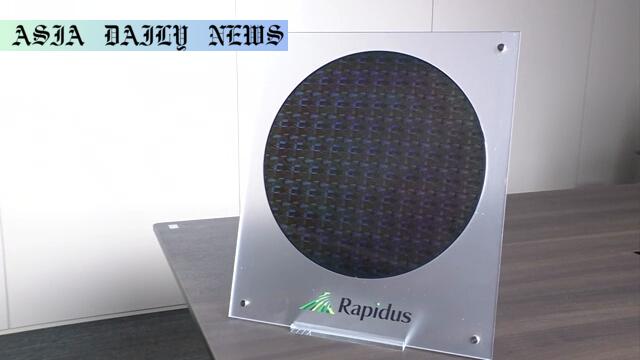2-nanometer chips, Japan’s Rapidus factory in Hokkaido will produce prototype semiconductors by July, aiming for mass production by 2027.

Introduction to Japan’s Semiconductor Breakthrough
Japan’s Rapidus is making waves in the global semiconductor industry by announcing its plans to unveil 2-nanometer chip prototypes in July 2024. This pioneering effort solidifies Japan’s position as a technological leader in semiconductor manufacturing, as the country sets its sights on becoming a key competitor in the advanced chip-making space. The company’s factory, located in Hokkaido, recently completed its installation of pilot production equipment, signaling Japan’s readiness to take on global giants such as Taiwan’s TSMC and South Korea’s Samsung Electronics. These industry leaders are already gearing up for their own mass production of advanced 2-nm chips by the end of 2023.
The Complexity in Manufacturing 2-nanometer Chips
The production of 2-nanometer semiconductors is highly intricate, involving nearly 300 meticulous steps. CEO Koike Atsuyoshi of Rapidus emphasized the company’s commitment to moving step by step to achieve a stable yield rate and gain customer confidence. These chips represent a critical development for industries dependent on high-performance computing, artificial intelligence, and advanced electronics. Unlike conventional chips, 2-nanometer technology allows for greater energy efficiency and processing power, making it a game-changing innovation in the tech industry.
Japan’s Strategic Vision and Global Competition
While Japan’s plans to begin mass production in 2027 may seem like a distant goal, the timeline is strategic. By entering the market with a high focus on quality and reliability, Rapidus aims to carve out a niche despite fierce competition. The semiconductor market’s current leaders, TSMC and Samsung, have already advanced in terms of both technological capabilities and production volume. However, by focusing on long-term objectives, including aligning with Japan’s broader ambitions for technological self-sufficiency, Rapidus aims to establish itself as a reliable alternative to current market leaders.
Impact on Japan and Global Tech Industries
Japan’s entry into the advanced semiconductor market signals a shift that could impact global supply chain dynamics. With the world increasingly reliant on semiconductors, Rapidus aims to alleviate some of the production pressures exacerbated by geopolitical uncertainties. It will also place Japan at the forefront of cutting-edge technologies, from electric vehicles to industrial robotics, thereby accelerating technological advancements on a global scale.
Hokkaido as an Emerging Tech Hub
Hokkaido’s selection as the location for the Rapidus factory is noteworthy. The region is emerging as a tech hub with growing infrastructure and skilled labor, making it an ideal setting for semiconductor innovation. By choosing this location, Rapidus underscores Japan’s effort to decentralize its tech industry while fostering regional development.
Commentary
Japan Paves the Way for Semiconductor Innovation
The announcement from Rapidus regarding the pilot production of 2-nanometer chips is a remarkable step forward for Japan’s tech ambitions. In an era defined by cutting-edge innovation, semiconductors have emerged as the backbone of technology, powering everything from smartphones to artificial intelligence systems. Japan’s move to challenge semiconductor giants like TSMC and Samsung marks a bold yet calculated endeavor, positioning the country as a serious contender in a highly competitive global arena.
The Steep Learning Curve of Advanced Chip Production
The complexity surrounding 2-nanometer chip production cannot be overstated. With nearly 300 intricate steps involved, Rapidus’s commitment to quality reflects the company’s understanding that precision is key to gaining the trust of global customers. While competitors may be ahead in terms of timeline, Japan’s step-by-step approach sets the stage for a consistent and reliable output once mass production begins in 2027. This approach could prove advantageous in establishing long-term partnerships with industries seeking dependable chip suppliers.
Hokkaido: Japan’s Blueprint for Regional Growth
Paving the way for innovation in Hokkaido, this venture represents a broader strategy to decentralize Japan’s technological efforts while showcasing the region’s economic potential. Hokkaido’s transformation into a tech hub could bring about a regional economic boom while attracting global talent to Japan. This development not only signifies Japan’s re-entry into the advanced semiconductor industry but also highlights its commitment to spreading industrial growth across the nation.
A Balanced Outlook Amidst Global Competition
Though TSMC and Samsung currently dominate the 2-nanometer race, Japan’s long-term vision should not be dismissed. By targeting 2027 for mass production, Rapidus has the opportunity to learn from competitors while ensuring a stable and scalable operational model. The company’s focus on quality and reliability, coupled with Japan’s strategic policies, positions Rapidus as a force to reckon with in the evolving semiconductor market.


